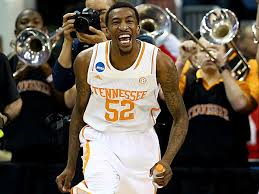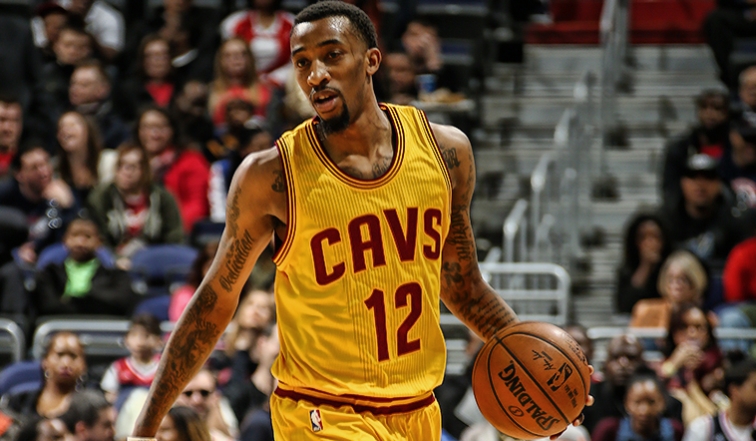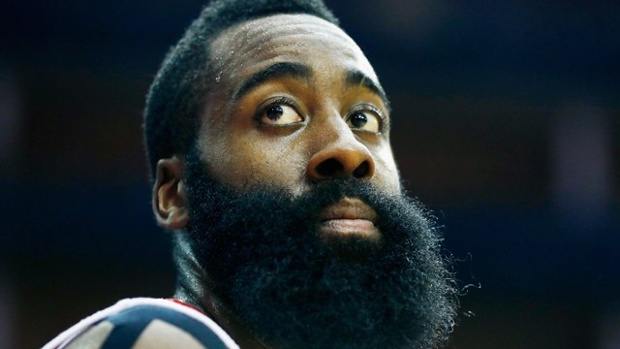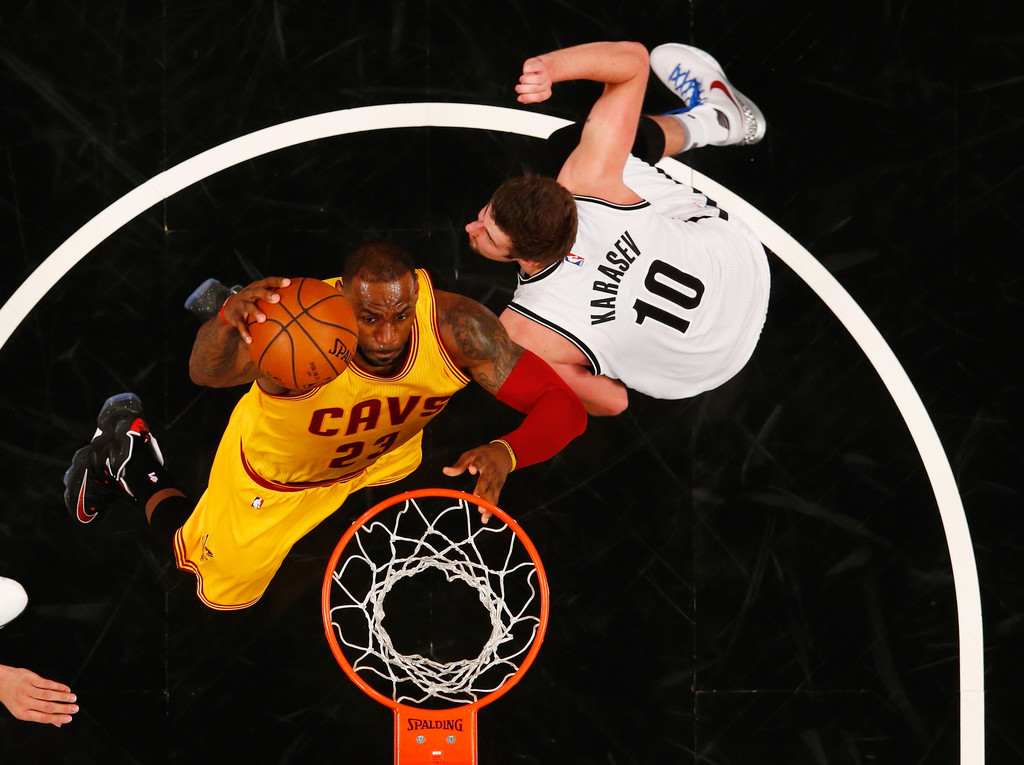
Getting To Know Jordan McRae
2016-03-31This season of Cavalier basketball has been nothing if not filled with drama. Between changes in coaching, changes in defense, changes in players, and changes in the mood of LeBron James, there’s always something going on with this team. Because of this, some things tend to fall under the radar, or at least aren’t examined to a great extent. One of those things has been the addition of Jordan McRae, a 25 year old shooting guard who first signed a 10-day contract with the Cavaliers on February 28, and apparently made enough of an impression to sign a multi-year contract on March 9th.
Fans may have heard that McRae was the NBA D-League single game record holder in scoring with 61 points for the Delaware 87ers against the Canton Charge, a record since broken by Russ Smith, but what about McRae makes him intriguing enough for a team with championship aspirations to invest in him over more proven players such as Dorell Wright, Cartier Martin, or DeJuan Blair?
McRae first began to gain national attention as a sophomore at Liberty County High School in Hinesville, Georgia. He quickly gained a reputation as a long, athletic wing player with a good motor who could both pass and score. He also needed to work on his strength, shooting form, and improve his focus and ability to play under control. To his credit, McRae improved in all of these areas over time, and in the 2009-2010 season, he averaged 24 points, eight rebounds, seven assists, and four blocks per game as a senior while being named First-Team All-State. McRae was rated as a four star recruit by Rivals.com, and accepted a scholarship to the University of Tennessee from coach Bruce Pearl over offers from Cincinnati, Indiana, and Oklahoma.

McRae’s collegiate career got off to a slow start as he averaged just 1.8 points in 5.3 minutes per game while appearing in just 10 games as a freshman. Pearl was fired amid a NCAA investigation and replaced by Cuonzo Martin, and McRae never missed another game in his collegiate career. As a sophomore, McRae started 15 of the 34 games he played in, averaging 8.6 points per game. His numbers took another jump his junior year, when he started 22 of Tennessee’s 33 games and finished as the team’s leader in scoring (15.7 ppg.), minutes played (33.6 minutes per game), three-pointers made (60), three-pointers attempted (169), and three-point percentage (35.5%). He was also second on the team in assists (2.0), blocks (0.9), and steals (0.8) per game. McRae was voted First-Team All-SEC, having averaged 19.2 points, and shooting 39.2% in conference play. He also showed impressive versatility, playing every position but center, and starting at point guard, shooting guard, and power forward at various times throughout the season. McRae’s growth was impressive, but as a four year player who was already 22 years old by the end of his junior year, could McRae do enough as a senior to be taken seriously as an NBA prospect?
To his credit, McRae did everything he could to answer this question in the affirmative. He improved his field goal percentage, free throw percentage, true shooting percentage, points, per game, assists per game, and PER for the third consecutive season, despite actually playing fewer minutes per game than he did as a junior. McRae started all 37 of Tennessee’s games and averaged 18.7 points, 3.5 rebounds, 2.5 assists and one block per game, and was voted First-Team All-SEC for the second season in a row. Then came the NCAA tournament. Along with Jarnell Stokes, McRae led the Volunteers to the Sweet Sixteen before a loss to Big Ten Champion Michigan. During Tennessee’s tournament run, McRae averaged 19.8 points, 3.5 rebounds, two assists, and 1.5 blocks per game, impressive numbers for any player, let alone one without a definite NBA future.
Unfortunately, none of this did much to change McRae’s draft stock. He was still seen as a bubble second round pick, mostly due to his age and lack of an elite skill at the NBA level. McRae also had mixed results at the NBA Draft Combine. While his seven foot wingspan and 8’8″ standing reach were impressive, his max vertical leap of 34.5 inches left a bit to be desired. McRae also weighed in at just 179 pounds, meaning that he would still need to add bulk and strength to compete effectively at the next level. These concerns wouldn’t have been a huge deal for an 18 year old, but for a 23 year old four-year player, they were huge. Eventually, McRae was selected by the San Antonio Spurs with the 58th pick in the draft and traded to the Philadelphia 76ers that same night.
McRae played for the Sixers in the Las Vegas Summer League, averaging 21 points, 2.5 rebounds, 1.0 assists, and 1.8 steals per game. Rather than accept a nonguaranteed contract and invitation to training camp, McRae signed with Melbourne United of Austrailia and New Zealand’s National Basketball League. While there, McRae continued to have great success, averaging 19.9 points, 4.7 rebounds, 2.7 assists, and 1.o steals in 27 games. H was also voted the NBL Player of the Month for December of 2014. While there, McRae garnered the interest of Sixers fans, who were desperate for any kind of talent to be added, and coach Brett Brown who said that McRae was “always in the back of our minds.” McRae returned stateside in March, signing with the Sixers’ D-League Affiliate, the Delaware 87ers, and averaged 18.4 points, 4.1 rebounds, 3.8 assists, 1.1 steals, and 1.0 blocks in 13 games. Perhaps most importantly, McRae shot 36.2% from three in his time with both teams, a possible sign that his outside shot was improving beyond arc enough to be considered an asset.
McRae rejoined the 76ers for the 2015 Summer League, averaging 12.5 points and 3.0 rebounds per game. This time he did sign a nonguaranteed contract with Philadelphia, and went to training camp with the team. In somewhat of a surprise, McRae was cut just before the start of the season, meaning that he was free to sign with any interested team. McRae re-signed with the 87ers, and proceeded to tear the league apart. In 29 games, McRae averaged 23.3 points, 4.6 rebounds, 5.2 assists, and 1.7 steals in 35.4 minutes per game, and of course on January 26, this happened.
McRae set a NBDL single game record with 61 points–since surpassed by Russ Smith—and finally seemed to put himself on the radar of NBA teams. Three days later, he not only was selected to NBDL All-Star Game, he signed a ten-day contract with the Phoenix Suns. The whirlwind continued as McRae made his NBA debut that night, putting up 12 points, four assists, two rebounds, and a steal in 25 minutes. The Suns also outscored the New York Knicks by two in those minutes, despite losing by 18. In seven games with the Suns over the course of two 10-day contracts, McRae averaged 5.3 points, 1.1 rebounds, and 1.4 assists in 11.7 minutes per game. While that equaled a solid 16.2 points, 3.5 rebounds, and 4.4 assists per 36 minutes, McRae shot just 42.3% from the field and 27.3% from three, and the Suns elected not to sign him for the rest of the season. He rejoined the 87ers on February 23, but would only be with the team for five short days.
After coming up short in the chase for Joe Johnson, the Cavaliers were looking to add another player preferably a wing. Besides the need for wing depth, the Cavs had only had 13 players on their roster since trading away Anderson Varejao and Jared Cunningham on February 18th, and had to add another player to meet league requirement. Enter McRae, a youngish player who had succeeded at every level he had been before the NBA, and didn’t seem overwhelmed during his time with the Suns. McRae was signed to a 10-day contract by the Cavaliers on February 28, and made his debut that night, recording eight points and one rebound during seven minutes of action in a blowout loss to the Washington Wizards. As McRae’s 10-day contract came to an end, the Cavaliers made the decision to sign him to a multi-year deal, with the 2016-2017 season an unguaranteed team option. Cavaliers general manager David Griffin cited McRae’s combination of length and scoring ability, as well as his willingness to accept his role while embracing the opportunity to improve as some of the reasons the Cavaliers decided to keep him.
So where does McRae go from here? Things get a bit murky when trying to answer that question. He turned 25 on Monday, and is nearly a year older than Kyrie Irving, so it’s hard to call McRae a young prospect. How can he show that he can be a part of the team’s future when he’s only played 42 minutes over the last month. The truth is he can’t. What McRae can do is make the most of the opportunities he gets in practice and the little playing time he does receive to make a positive impression on the front office and coaching staff. He will likely play for the Cavaliers at the Las Vegas Summer League in July, and this will give him real game time to show the Cavaliers he can be the kind of two-way wing that every team can always use. If he can do this, then McRae’s NBA dream will be much closer to becoming a permanent reality.




I have an eery feeling that the Cavs will undergo a massive transformation in the playoffs. Shut down defense, Lebron dominance in the paint, and ball movement.
Also, a major adjustment possibly, one that people don’t see coming. K-Love comes off the bench. Lebron moves to the 4, Delly’s usage sky rockets.
I’d love to see all these ideas tried out. Unfortunately there are just things that aren’t done in the NBA; and K-love off the bench is one of those things. More likely to see DeAndre shoot underhand free throws than any intelligent disruption or experimentation (sadly).
Test (believeLAND)
Delly wins Cleveland a ring, then goes to San Antonio this summer.
Testing
Test Nest (Nate Smith)
test test testy test
Here I reply to Nate Smith “test test testy test” at the lowest thread level. Note the time. The wish is that replies at the lowest thread level were in some sort of chronological order (either ascending or descending).
Here I’m replying directly to Tom Pestak at the same level. Note the time.
Test Nest (believeLAND)
Test 1st
I’d like to see McRae get some rotation minutes. He certainly could be useful as a defender and bench scorer. If the Cavs are gonna throw away games with the main Line guys, might has well give him some run. Wouldn’t mind Shump getting a dnp with McRae getting him minutes to give someone hungry some run. Nice profile, Mike.
Thanks Nate, I know this is blasphemy to some, but I’m more intrigued by McRae than I ever was Cunningham.
Easily. Cunningham had no NBA skills. McRae, while he probably won’t amount to anything, can at least play basketball.
I got an idea. I don’t have a Disqus account but I noticed it shows directly who you replying to, all in a more cleaner column. Maybe you can do something like that. But PLEASE don’t bring Disqus here as we will be all networked to other sites and all the trolls will come here.. I’m just citing their format but please don’t enroll CtB to that service.
We vetoed discus. I will keep working on it. We are constrained by funds and time to implement it.
Oh good absolutely no to Disqus here..
Put a donate button.
Wait, we can post videos? Here’s one of Shumpert “respecting” coach Lue: https://vine.co/v/iD3PrDQH9D5
I like level of nesting comments and the automatic updating system.
Is it auto updating? I thought I turned that off.
OK, Tried to fix the comment section again. I’m putting them all in “oldest comments first” order, starting on the last page. It was very difficult to follow a thread with nested replies when this wasn’t happening. I’m also considering just allowing two levels of nested comments because mobile only displays two and it’s confusing. Unfortunately, your newly typed comment appears at the top, and not at the bottom with all the new comments, but I don’t have a way around this. The reason we disabled the new commenting this week because there was no way to filter people putting… Read more »
I’m fine with the previous comment section format. The one before this new format. I think you guys can use that as a foundation.
Well, Tom hated it, so…
But I appreciate you voicing your opinion. :)
The previous comment section format was awful. I’m really glad they made the change. Automatic updating comments makes a tremendous difference.
Id prefer no levels of nesting. I like to read all the comments but theres no way to know who has replied where and when. Prefer people just ‘quote’ others if they’re replying to something specific.
Thanks for doing all this work!
Reply timeline of the nested responses – 8:13,9:01,9:53,9:06,9:50. I dont understand how to follow a conversation this way.
No idea where this comment will show up in the thread.
There’s a carrot ^ symbol on the nested replies. It’s easy to miss cause it’s only indented one level deep. You can hide replies on a subthread deeper than that but you have to look for the carrot symbol. I can take nested comments to only two levels deep if you think that makes more sense. I currently have it at four.
Thanks for the extra work you do on the site, Nate.
No problem. Thanks for reading and commenting.